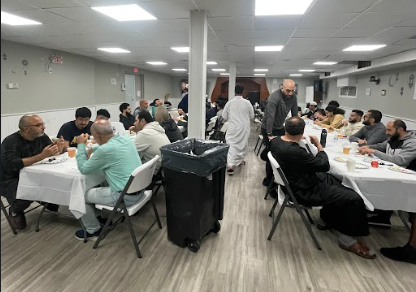Ostracism is a political practice in ancient Athens whereby a prominent citizen who threatened the stability of the state could be banished without bringing any charge against him. It was known to be a severe form of punishment in Ancient Greece and brought great shame on the individual banished. Yet this shameful punishment has transformed over the years of our human evolution.
In modern day, ostracism is exclusion by general consent from common privileges or social acceptance. When one is ‘ostraciszed’ they isolate themselves from the group they are with. This is often due to a certain aspect that does not comply with them. People who cannot relate to their peers or coworkers push themselves away from those around them.
Ostracism is present in all social places like clubs, parties, and work but it can be most commonly witnessed in school. The stereotypical picture of ostracism is the student sitting alone at lunch. But what is it that separates an individual from the group? Is it a choice or a banishment?
How does Ostracism occur?
As human beings, we are social creatures and like to be around others like us. This allows us to feel safe in our environment and grow our potential and personality. When it comes to psychology, being a part of a group one can associate allows a person to self- actualize or fulfill one’s potential. Yet when it comes to social meeting places, like school or our workplace, there is much diversity in interest, culture and mindset. This leads to people finding themselves disagreeing with the opinions and beliefs of the general public.
In these situations, there are many options: one can argue, go with the word of the public or hold their ground. Yet when individuals choose to maintain their beliefs and actions, there is a strange isolation that occurs. The certain group seems to separate from the individual and form an invisible barrier between the two. This is the first phase of ostracism, but there are two.
After this separation it is the separated individual’s choice how they handle the situation. When it comes to this phase, they can either choose to continue socializing with the group no matter how they treat them or turn away from them as well. And, when the individual turns away, the entity of ostracism takes over the scene.
How can we prevent this from happening?
Whether you feel separated at school or see someone who seems to be different then everyone else, there is always hope. If you feel that you are a victim in your school or workplace try to see what is the root of your isolation. There are often little keystone events that probably lead you to be apart from others. First, you should figure out what was the key reason. Then you can more clearly see what you can do to change the situation. About 99% of the time the idea that other people don’t like you is just in your head! It is a miscommunication!
So, after you figure out the reason for your isolation, try to challenge yourself. Change your body language and put on a smile. Show others you want to be friendly and talk to them. Find a crowd that shares your topics and interests. Maybe talk to someone who is already separated if you want to step outside your comfort zone. Maybe they can become your best friend.
Ostracism is not a life long sentence. With time, confidence, and effort, ostracism can become a thing of the past.












